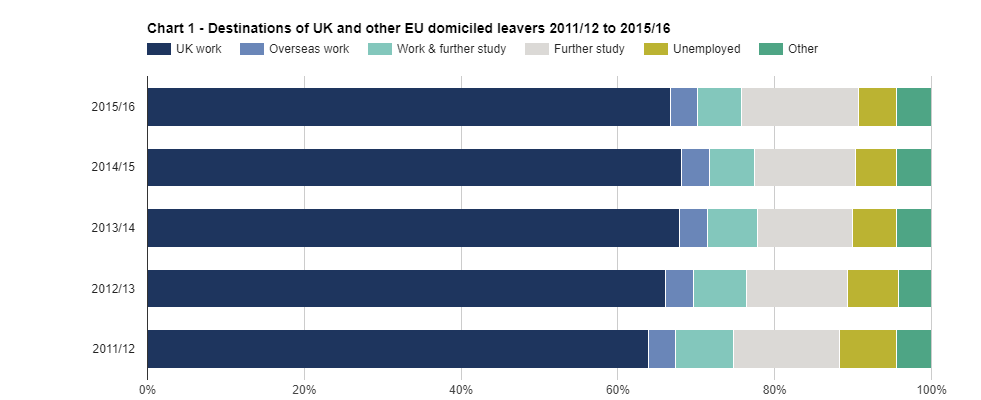The introduction of postgraduate loans in England appears to have boosted the proportion of UK undergraduates going on to further study to its highest point for at least four years.
According to the latest data from the Destination of Leavers from Higher Education (DLHE) survey, released on June 29, 15 per cent of those who left university in 2015-16 went on to another course, up from 13 per cent the year before.

The figures tally with statistics released earlier this year showing that full-time postgraduate enrolments in England for UK and other European Union students rose by 22 per cent in 2016-17 to just over 90,000.
Taxpayer-backed loans for postgraduates of up to £10,000, which are repaid concurrently with undergraduate loans, were introduced in England for the first time this year after being announced by the government in 2014.
Elsewhere, the Destinations of Leavers from Higher Education data from the Higher Education Statistics Agency, which record the activity of graduates six months after leaving university, showed a slight dip in the share of leavers in UK work to 67 per cent, a likely effect of the boost in those studying. The percentage unemployed was 5 per cent, a figure that has been gradually decreasing since 2011-12.
There is also further confirmation of the gender pay gap that exists as soon as graduates leave university – something already highlighted by the first salary data, by university, from tax records released by the Department for Education earlier this month.
According to the latest DLHE survey, a higher proportion of male than female graduates have salaries of £25,000 or more after six months. In 2015-16, the median salary for female leavers was £21,000 compared with £22,000 for men, averages that were unchanged from the year before.
According to the data, there were 17,355 recent higher education leavers working in London last year who had originally come from outside the capital and studied somewhere else in the UK too. No other region in the UK draws its working graduates from the rest of the country in such numbers, the closest being South East England with 6,710.

In addition, there were 12,725 Londoners who studied elsewhere and returned to the capital for work, 19,660 people from the capital who studied there and stayed for work and 8,310 university leavers who came from other parts of the UK to study and then work in London.
The release of the latest DLHE data comes just a few days after Hesa confirmed its new survey of university leavers, which is due to start collecting data from next year, would be called the Graduate Outcomes survey. The new survey will look at the destination of leavers over a longer time frame than the current six months in the main DLHE.
Find out more about THE DataPoints
THE DataPoints is designed with the forward-looking and growth-minded institution in view




